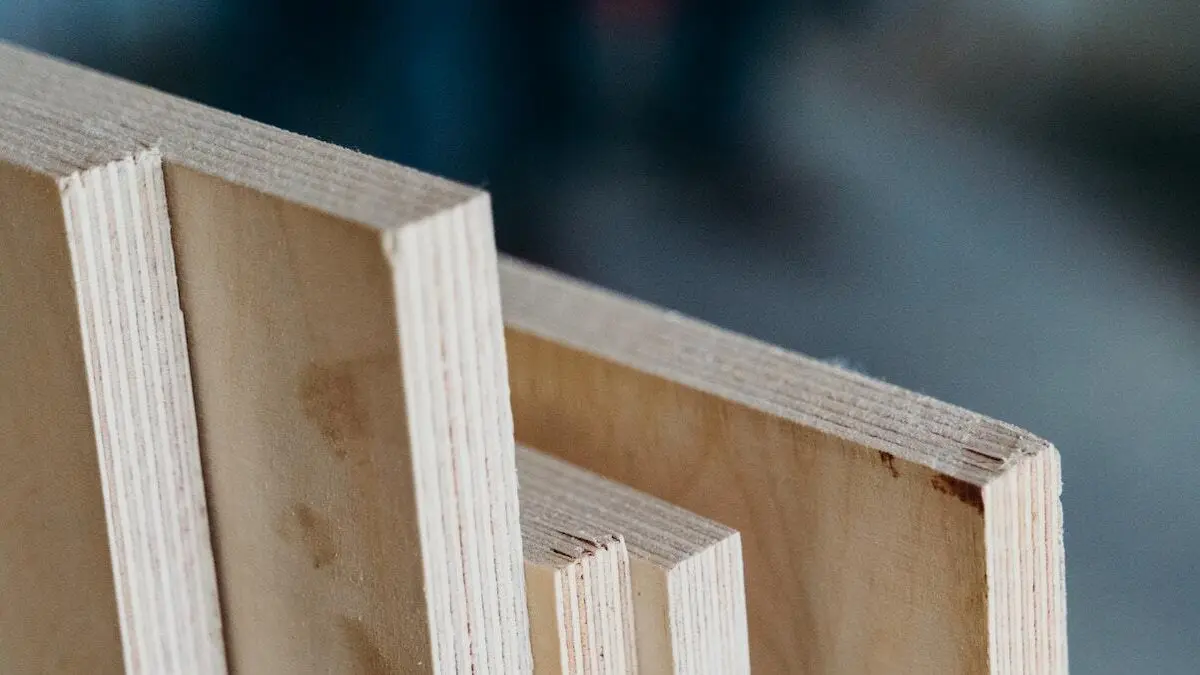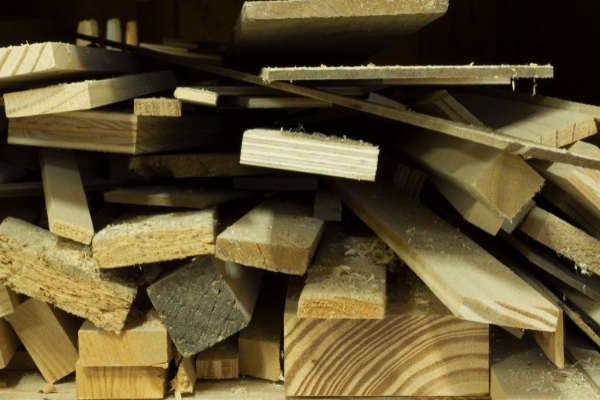Are you wondering if plywood is safe to burn? Well, let’s find out together! When it comes to fire safety, it’s essential to know what materials are suitable for burning and which ones should be avoided. In this article, we’ll explore the topic and shed some light on whether plywood is a safe option to use as fuel for your fire.
Now, you might be thinking, “Why would anyone want to burn plywood?” Well, there are situations where people may have leftover plywood from a construction project or old furniture that they no longer need. Instead of letting it go to waste, some may consider using it as a source of heat or to create a cozy fire ambiance. However, before you toss that plywood into the flames, it’s crucial to understand the potential risks involved.
So, grab a seat by the fire and let’s dive into the world of plywood burning to uncover whether or not it’s a safe choice. We’ll explore the materials used in plywood, the impact of burning it, and the precautions you should take to ensure your safety and the well-being of those around you. Let’s get started!

Are Plywood Safe to Burn? Exploring the Safety and Environmental Impact
Introduction:
When it comes to burning materials for warmth or outdoor activities, it’s essential to consider safety and environmental impact. Plywood, a popular construction material, often finds its way into fires for various purposes. However, there are concerns about the safety of burning plywood due to the chemicals used in its manufacturing process. In this article, we will delve into the details and explore whether plywood is safe to burn, and the potential consequences it may have on both human health and the environment.
1. The Chemical Composition of Plywood
Introduction:
Before understanding the safety of burning plywood, it is crucial to know its chemical composition. Plywood typically consists of multiple layers of thin wood veneers, bonded together with adhesive resins. The primary resins used in plywood manufacturing are urea-formaldehyde, phenol-formaldehyde, and melamine-formaldehyde. These adhesives offer structural stability and strength to the plywood sheets, but they can pose risks when burned.
The Potential Dangers of Burning Plywood
1. Release of Toxic Gases:
When plywood is burned, the resins used in its manufacturing process release toxic gases, such as formaldehyde, phenol, and volatile organic compounds (VOCs). These gases can cause respiratory irritation, eye and throat irritation, and long-term health risks, including cancer.
2. Air Pollution:
Burning plywood contributes to air pollution, releasing fine particulate matter (PM2.5) and other harmful pollutants into the atmosphere. This pollution can have adverse effects on air quality and exacerbate respiratory and cardiovascular conditions.
2. Safe Alternatives to Burning Plywood
Introduction:
Given the potential dangers associated with burning plywood, it’s essential to consider safe alternatives. Here are some viable options for heating or outdoor fires that pose less harm to human health and the environment.
1. Firewood:
Using seasoned firewood from sustainable sources is one of the safest and most environmentally friendly options. Hardwoods like oak, maple, and birch are excellent choices as they burn efficiently and produce less smoke and pollutants.
2. Pellet Stoves:
Pellet stoves are another safe alternative to burning plywood. These stoves burn compressed wood pellets, which are made from waste materials like sawdust and agricultural residue. They offer efficient heating and produce fewer emissions compared to traditional wood-burning stoves.
3. Electric or Gas Fireplaces:
Electric or gas fireplaces provide a convenient and clean way to enjoy the ambiance of a fire without the harmful emissions associated with burning wood or plywood. These alternatives are energy-efficient and do not produce smoke or particulate matter.
3. Responsible Plywood Disposal and Recycling
Introduction:
If you have unwanted or damaged plywood, it’s important to dispose of it responsibly. Burning it should be avoided due to the potential hazards mentioned earlier. Instead, consider the following options for plywood disposal and recycling.
1. Recycling Centers:
Many recycling centers accept old plywood for proper disposal. Check with your local recycling facilities to see if they accept plywood and follow their guidelines for drop-off or collection.
2. Repurposing:
If the plywood is in good condition, consider repurposing it for various DIY projects. Plywood can be used for shelves, cabinets, or even as a base for crafting projects. By repurposing, you extend its life and reduce waste.
3. Landfill Disposal:
As a last resort, if your local recycling facilities do not accept plywood and repurposing is not feasible, dispose of plywood at a designated landfill. Make sure to contact your local waste management authorities for guidance on proper disposal methods.
4. Conclusion
In summary, burning plywood can pose significant risks to human health and the environment due to the release of toxic gases and pollutants. It is crucial to prioritize safety and opt for safer alternatives like firewood from sustainable sources, pellet stoves, or electric/gas fireplaces. When disposing of plywood, consider recycling centers or repurposing options before resorting to landfill disposal. By making responsible choices, we can reduce the potential harm associated with burning plywood and protect our health and the environment.
Key Takeaways: Are Plywood Safe to Burn?
- Plywood should NOT be burned as a primary source of heat due to the chemicals and glues used in its manufacturing process.
- When burned, plywood releases toxic fumes that can be harmful to human health.
- If you must dispose of plywood, it’s best to use proper recycling or disposal methods instead of burning it.
- Burning plywood can also lead to the release of harmful substances into the environment, contributing to air pollution.
- For safe and efficient heating, it is recommended to use materials specifically designed for burning, such as firewood or pellets.
Frequently Asked Questions
Curiosity may lead you to wonder about the safety of burning plywood for various purposes. Here are some common questions people have about this topic:
Q1: Can plywood be safely burned in a fireplace or a wood stove?
Answer: No, it is not safe to burn plywood in a fireplace or a wood stove. Plywood is often treated or made with adhesives that contain harmful chemicals such as formaldehyde. When burned, these chemicals can be released into the air and pose health risks. It is advisable to use seasoned firewood that is specifically designed for burning.
However, if you have scrap plywood that you need to dispose of, it is recommended to take it to a recycling facility or follow local guidelines for safe disposal.
Q2: Is it safe to burn plywood outdoors?
Answer: Burning plywood outdoors can still release potentially harmful chemicals into the air. It is generally discouraged to burn plywood as a means of waste disposal, even in open spaces. The chemicals released during burning can have negative effects on the environment and human health. It is best to explore alternative methods of disposal or recycling.
If you are looking for a fire source for outdoor use, consider using natural firewood or other approved sources that do not contain potentially harmful chemicals.
Q3: What are the dangers of burning plywood indoors?
Answer: Burning plywood indoors can release toxic fumes and pollutants into the air. Plywood is often treated with chemicals, such as formaldehyde, which can be harmful when burned. Inhaling these fumes can cause respiratory problems and other health issues.
It is crucial to prioritize indoor air quality and ensure that any materials burned indoors are safe and meant for that purpose. Using proper ventilation systems and following safety guidelines for indoor burning are essential to protect your health and the well-being of those around you.
Q4: Can I use plywood for campfire cooking?
Answer: It is generally not recommended to use plywood for campfire cooking. As mentioned earlier, plywood is often treated with chemicals and adhesives that can be released when burned. These chemicals can contaminate the food and pose health risks when ingested.
When cooking over a campfire, it is safer to use natural firewood or approved cooking fuels specifically designed for outdoor cooking. This will help ensure the safety and quality of the food you prepare.
Q5: Are there any safe uses for plywood scraps other than burning?
Answer: Absolutely! Instead of burning plywood scraps, consider recycling or repurposing them. Plywood can be used for various DIY projects, such as building shelves, small furniture pieces, or even artistic creations. Additionally, some recycling centers accept plywood for proper disposal.
By finding alternative uses for plywood scraps, you not only avoid potential health risks but also contribute to sustainability efforts and reduce waste.

Summary
Is burning plywood safe? The answer is no. Plywood contains harmful chemicals like formaldehyde. When burned, these chemicals are released into the air, which can be harmful to our health. It’s best to avoid burning plywood and choose safer options for heating and cooking.
Additionally, burning plywood can also release toxic fumes and create pollution. This can harm the environment and contribute to air pollution. It’s important to consider the impact of our actions on both our health and the planet. So, let’s find alternative ways to stay warm and cook without using plywood as fuel.
